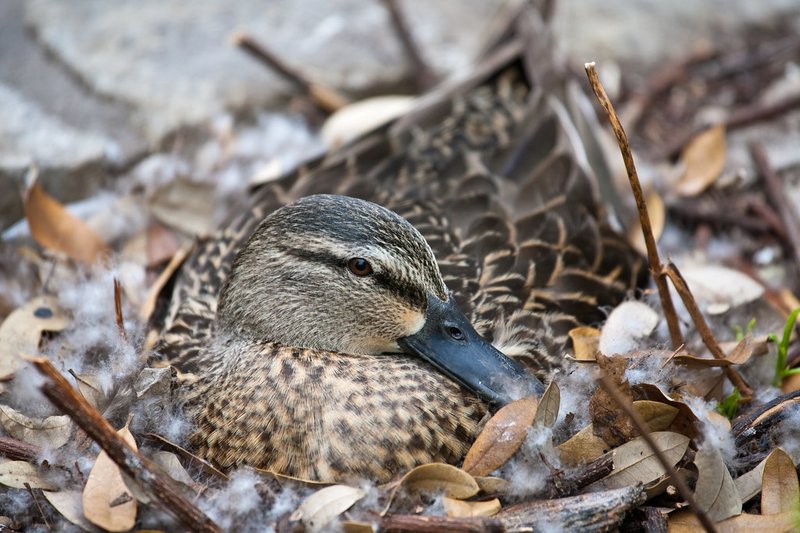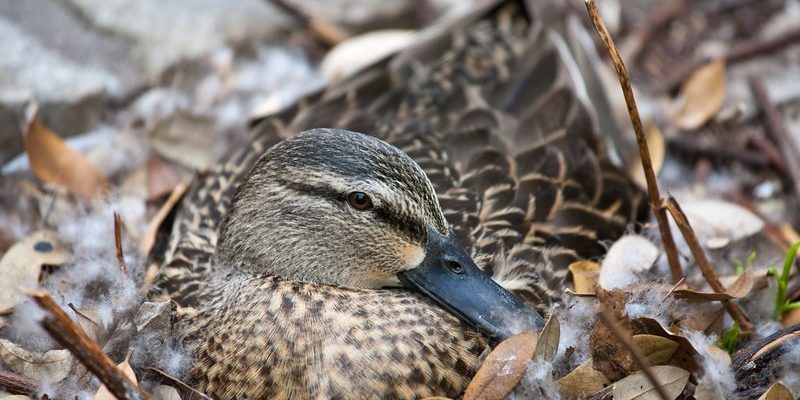
Imagine you’re sipping coffee with a friend, and they start sharing about how mallards find a perfect spot to raise their young. They pick out cozy locations, often hidden in tall grass or reeds, and carefully build their nests. This protective instinct is just one part of their lifecycle, which is a journey filled with love, survival, and the incredible drive to bring new life into the world.
Let’s dive into the intriguing world of mallards and explore their nesting habits and lifecycle, from the stage of courtship to the joyful moment when ducklings take their first swim.
Understanding Mallard Ducks
Mallard ducks, scientifically known as *Anas platyrhynchos*, are among the most common and widely recognized ducks around the globe. These birds are easily spotted by their striking green heads (for males) and their mottled brown appearance (for females).
You might be wondering why mallards are so popular. One reason is their adaptability. They can thrive in various environments, from urban parks to remote wetlands. This resilience makes them a frequent sight by lakes and rivers. Mallards are also known for their noisy quacking, a characteristic every nature lover recognizes.
In their social structures, mallards often form pairs during the breeding season, which typically occurs in late winter to early spring. Strong bonds form between the male and female, as they prepare for the exciting journey of raising ducklings together.
Nesting Locations
When it comes to nesting, mallards are pretty picky. They usually choose locations near water sources, as these spots provide safety and easy access to food for the ducklings once they hatch. They often look for dense vegetation, like tall grasses or reeds, which can hide their nest from predators.
The nest itself is a cozy little structure. The female mallard usually builds it using a variety of materials, including grass, reeds, and even down feathers, which help insulate the eggs.
You might find it surprising, but the nest is often located just a few feet away from water, sometimes even as close as a couple of meters. This proximity is vital for ducklings that need to reach the water quickly after hatching.
The Nesting Process
Creating a nest is no small feat for a mallard. Once the female has selected a secure location, she starts to lay her eggs. On average, a mallard will lay about 8 to 12 eggs, although this number can vary. Each egg is a pale blue or greenish color, making them quite pretty to look at.
After laying her eggs, the female will begin to incubate them. This process typically lasts about 28 days. You might envision her sitting on the nest quietly, but here’s the thing—she doesn’t just sit there all day. The female will leave the nest for short periods to feed, drink, and stretch her legs, making sure to keep the eggs warm and safe during her absence.
Throughout this time, the male mallard usually stays nearby, keeping a watchful eye on the nest and protecting his mate and future ducklings from potential threats.
Hatching and Ducklings’ First Days
Once the incubation period is over, the excitement builds as the ducklings begin to hatch. The process can be quite thrilling for the female as she hears the soft peeping sounds of her young ones. It’s not uncommon for all the eggs in a clutch to hatch within a day or two, which is great news for the new family.
After they hatch, a remarkable transformation occurs. Ducklings are precocial, which means they are relatively mature and mobile shortly after birth. Within hours, they’re ready to take their first swim! The female leads her fluffy, yellow ducklings to the water, and this is where their adventure truly begins.
In their first few days, ducklings learn essential survival skills, such as diving for food and avoiding predators. Their mother stays close, guiding them and teaching them how to forage for insects, plants, and small aquatic creatures.
Growth and Development
As the days progress, the ducklings continue to grow rapidly. Within just a few weeks, they lose their downy feathers and start to develop their adult plumage, which helps them blend into their surroundings.
During this time, you’ll often see mallard families swimming together. The female quacks, calling the ducklings to stay close. It’s a mesmerizing sight, watching the little ones paddle along, mimicking her movements.
In terms of diet, the ducklings are fed by their mother until they’re about 6-8 weeks old, at which point they become more independent and can find food on their own. It’s a balance of growth and learning, as they transition from relying on their mother to becoming entirely self-sufficient.
Challenges Faced by Mallards
Like many wildlife species, mallard ducks face several challenges throughout their lifecycle. Predators, such as foxes, raccoons, and birds of prey, often threaten their nests and ducklings. Even adult mallards are not entirely safe, as they can fall prey to larger animals.
Habitat loss is another major concern. Wetlands and natural environments are increasingly threatened by urban development and pollution, making it harder for mallards to find suitable nesting grounds. Climate change also poses risks, altering their migratory patterns and breeding seasons.
Despite these challenges, mallards are resilient and have adapted over time. For example, many have learned to nest in urban environments where they can find food more easily, showcasing their remarkable ability to survive and thrive in different conditions.
The Importance of Mallards in Ecosystems
Mallard ducks play a vital role in their ecosystems. By feeding on various plant materials and small creatures, they help control insect populations and contribute to the health of wetland habitats. Their foraging habits can also aid in seed dispersal, promoting plant growth and biodiversity.
In addition, mallards serve as a food source for various predators in the food chain, ensuring the balance of wildlife populations remains intact.
By understanding their nesting habits and lifecycle, we gain insight into the importance of preserving their habitats. Protecting wetlands and natural spaces not only benefits mallards but also supports countless other species that depend on these environments.
The lifecycle of mallard ducks is a beautiful tapestry woven with instinct, resilience, and parental care. From selecting the perfect nesting site to guiding their young through the challenges of the world, mallards embody the spirit of nature’s perseverance.
By celebrating their nesting habits and understanding the complexity of their lifecycle, we can appreciate the role these ducks play in our ecosystems and the world at large. Whether you’re watching them in a local park or researching their habits, let’s cherish the wonders of mallards—and the delicate balance of nature they represent.

